Most people think Nevada is void of signs of wildlife. Other than the globally celebrated casinos of Las Vegas, the state doesn’t get much credit, being a wasteland and all.
What you don’t know is, Nevada has around 492 species of birds in all colors!
It ranks seventh in the United States in terms of area, and naturally, all of that won’t be full of humans only.
Out of the 492 resident and recurring types of birds in Nevada, our basic bird checklist here has 30 of the most beautiful species in the state. They’re arranged by color to help you memorize their shapes fast!
Red Birds in Nevada
House Finch

- Scientific Name: Haemorhous mexicanus
- Length: 5–6 inches
- Weight: 0.6–0.9 ounces
- Wingspan: 8–10 inches
House Finch males are red, while the females have brownish-gray bodies. The males have red on their faces and upper breast, and some of them may have more of the color, depending on their diet.
These birds have small bodies, but their beaks are large, making them look a bit odd. Their heads are flat, and their wings are short. Their tails are a bit longer than average.
All finch species live in flocks, house finches included. Even when they visit backyards, they do it in groups. You can attract them by laying some black oil sunflower seeds in your bird feeding station.
Pileated Woodpecker
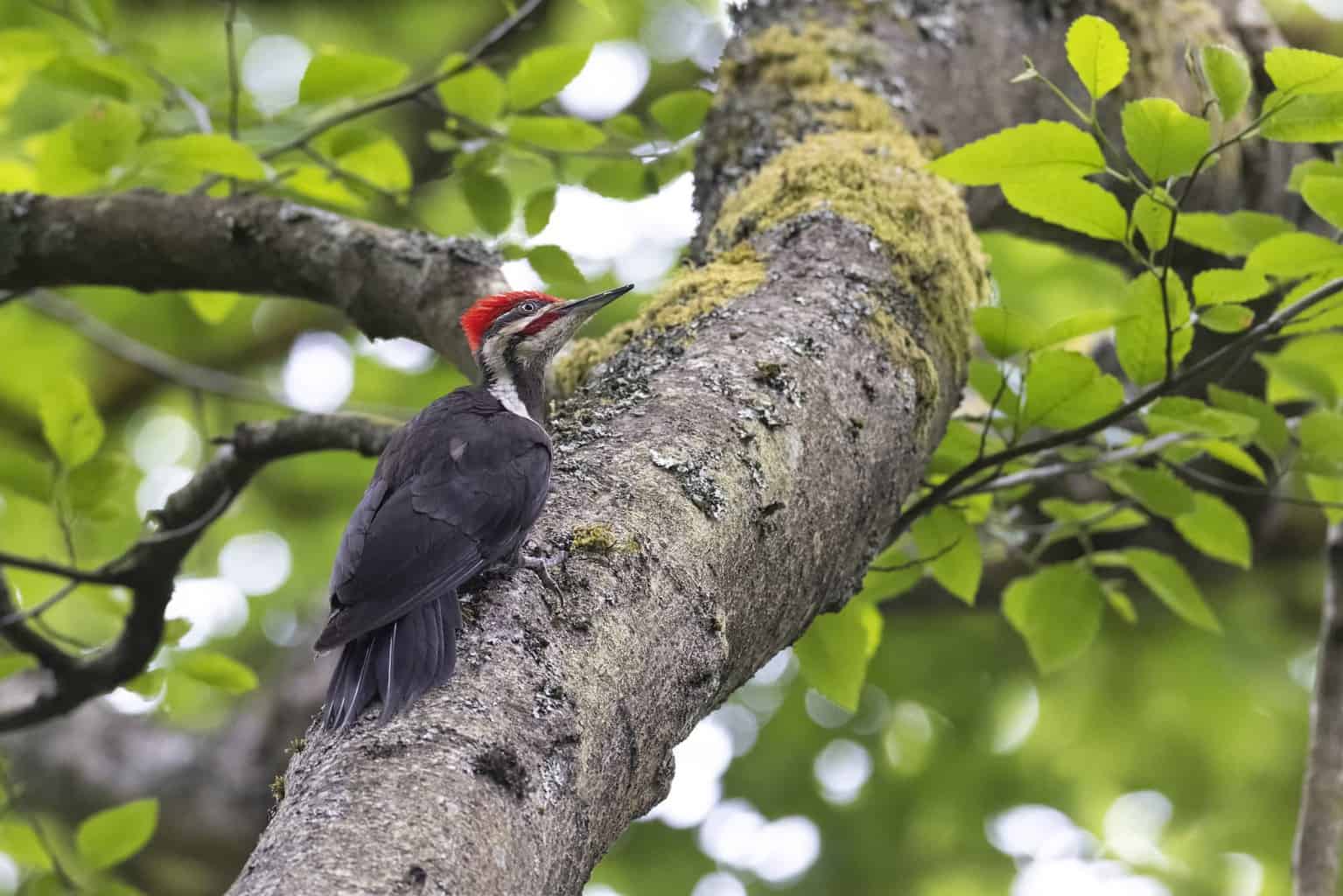
- Scientific Name: Dryocopus pileatus
- Length: 16–19 inches
- Weight: 8.8–14.1 ounces
- Wingspan: 26–30 inches
Pileated woodpeckers have red crowns. It’s their most distinctive feature, although they have otherwise black bodies. They also have a white wing lining which is visible in flight.
These birds have long, pointed bills and large bodies. If you remember seeing them somewhere, it was probably Woody Woodpecker.
Pileated woodpeckers are permanent residents of forests. They stay around hollow trees and dead trees, where they can peck the wood to make their nests.
Red-Winged Blackbird

- Scientific Name: Agelaius phoeniceus
- Length: 9–10 inches
- Weight: 2.5–3 ounces
- Wingspan: 12–16 inches
Red-winged blackbirds are primarily black, but the red and yellow patch on the males’ black wing is impossible to miss. It’s very vibrant, creating a bold contrast against their otherwise dark bodies.
These birds love being noticed, so expect to see a lot of singing and dance flights. They mostly perch on high trees, and they love staying around standing water.
Red Crossbill
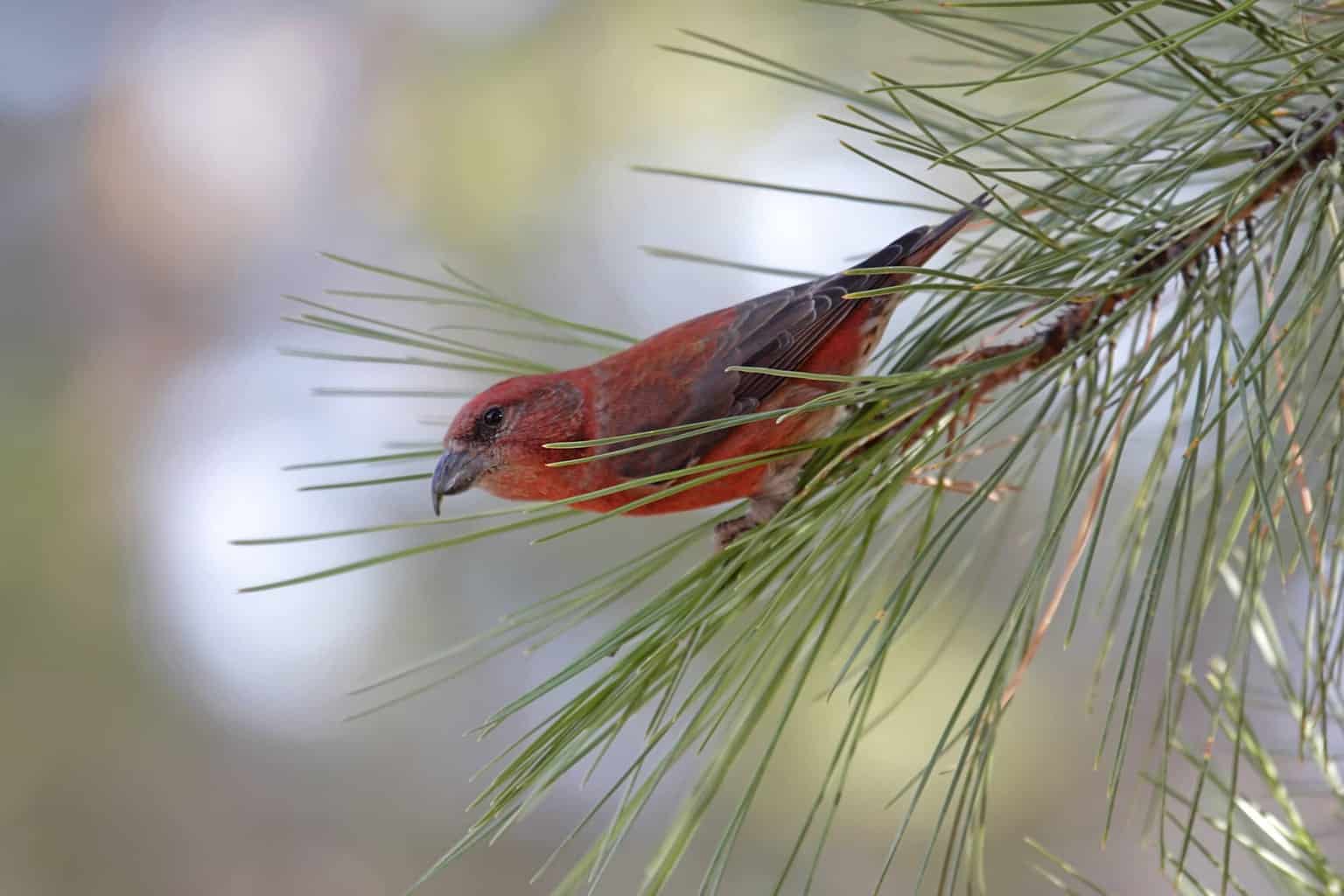
- Scientific Name: Loxia curvirostra
- Length: 5.5–6.5 inches
- Weight: 1.2–1.4 ounces
- Wingspan: 10–10.8 inches
Red crossbills have red feathers, but their bodies are a bit dull. They have grey spots all over their bodies, and they’re chunkier than your average bird. Additionally, the immature birds have lighter bodies, leaning more towards yellow.
These birds love backyard feeders, so you may get lucky and encounter one or two. You can lay some suet, raisins, and sunflower seeds and wait for a red cardinal to come knocking.
Pine Grosbeak
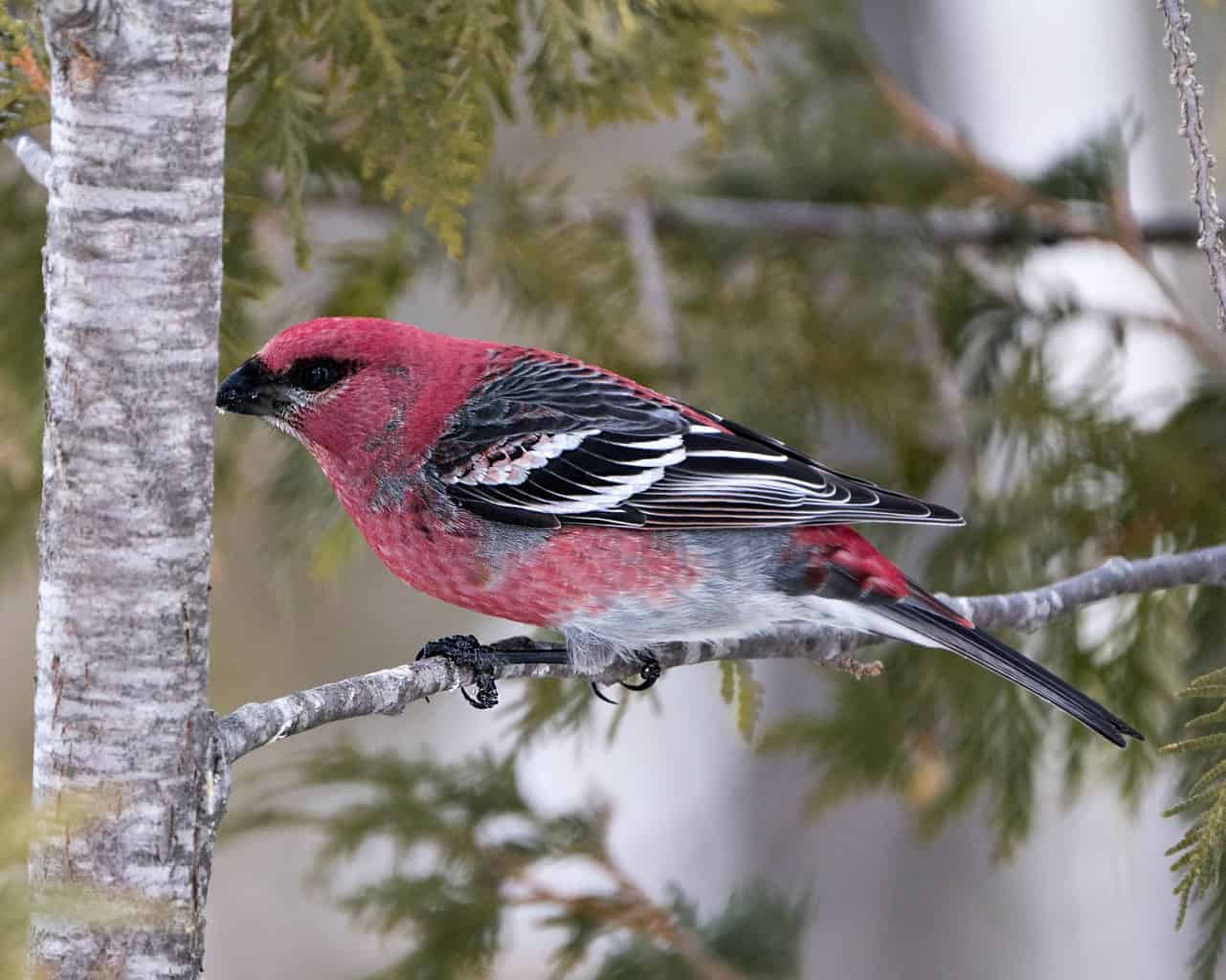
- Scientific Name: Pinicola enucleator
- Length: 9–10 inches
- Weight: 1.8–2.8 ounces
- Wingspan: 12–13 inches
Pine grosbeaks aren’t common in Nevada, but you may get lucky. You’ll know them at first glance, thanks to their vibrant red plumages. They have gray wings, and you can quickly identify them by the black area around their eyes.
These grosbeaks are nearly the same size as robins, and they have heavy chests and round heads. Their bills are thicker than average, and their tails are slightly notched towards the end.
These birds spend most of their time in coniferous forests, often hiding in thick bushes and shrubbery.
Northern Cardinal
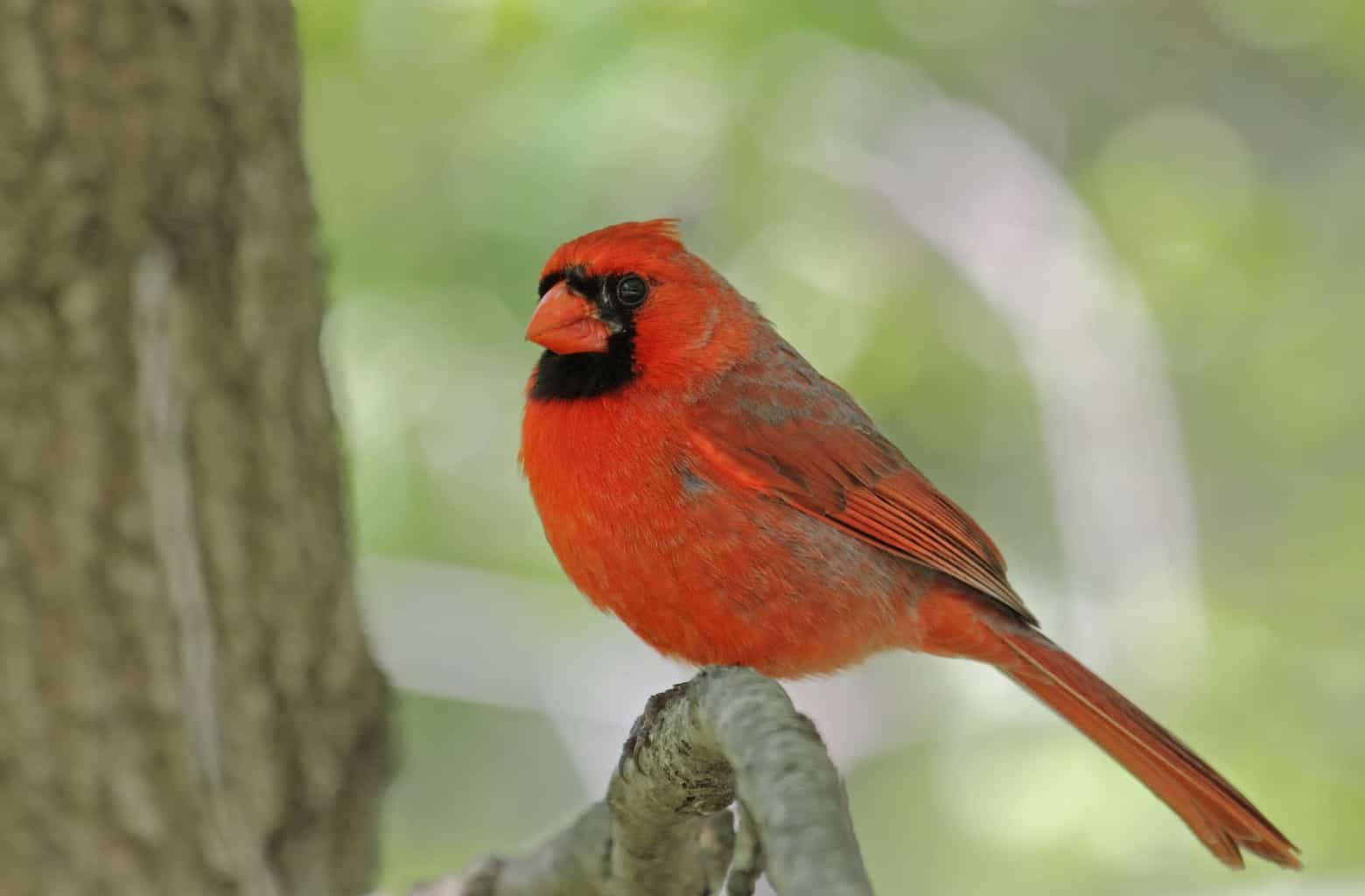
- Scientific Name: Cardinalis cardinalis
- Length: 8.3–9.1 inches
- Weight: 1.5–1.7 ounces
- Wingspan: 9.8–12.2 inches
Northern cardinals are among the easiest birds to identify. They have vibrant red bodies, and their bodies are round and small. They’re also pretty abundant in the US, so your chances of catching sight of them are high.
Cardinals move in pairs, and they mostly stay around low shrubs and trees. They are common backyard birds, but they prefer staying near parks and shrubby forests.
Blue Birds in Nevada
Blue Jay

- Scientific Name: Cyanocitta cristata
- Length: 9–12 inches
- Weight: 2.5–3.5 ounces
- Wingspan: 13–17 inches
Blue jays are the most common bluebird species in the US and most states. Many bird watchers look out for them because they’re among the prettiest birds in the world.
These bluebirds frequently stay around oak trees, and they visit backyard feeders on occasion. They have blue in their tails, black-barred wings, backs, and crests, and some odd fellows have lavender plumages.
If you hear the jay’s call, you may be taken aback. They sound strikingly similar to hawks, although they’re adorable and much smaller. However, they use the call to warn their family when there’s danger around.
Blue-Gray Gnatcatcher

- Scientific Name: Polioptila caerulea
- Length: 4–4.3 inches
- Weight: 0.2–0.3 ounces
- Wingspan: 6.3 inches
Blue-gray gnatcatchers have a misleading name because they don’t feed on gnats. Instead, they feed on other insects and seeds.
These birds have round bodies with cartoony features. They have blue head caps and backs, and they’re small. Most of the time, you’ll find them around deciduous forests and shrubbery.
They’re smaller than average, so you’ll have to strain your eyes to spot them. They’re similar to black-capped chickadees, although they have more colorful feathers.
Blue Grosbeak

- Scientific Name: Passerina caerulea
- Length: 5.5–7.5 inches
- Weight: 0.9–1.11 ounces
- Wingspan: 10–11 inches
Blue grosbeaks are similar to Indigo buntings, so you may confuse them. However, grosbeaks have smaller bodies. The males have completely blue bodies in the breeding season. Towards the season’s end, the feathers on the tail get brown.
These birds spend most of their time in brushy fields, woodland edges, hedgerows, and forests. They’re rare in Nevada, so your chances of seeing them are slim. As a matter of fact, they’re rare in all the states. Other grosbeaks may be more common.
Pinyon Jay
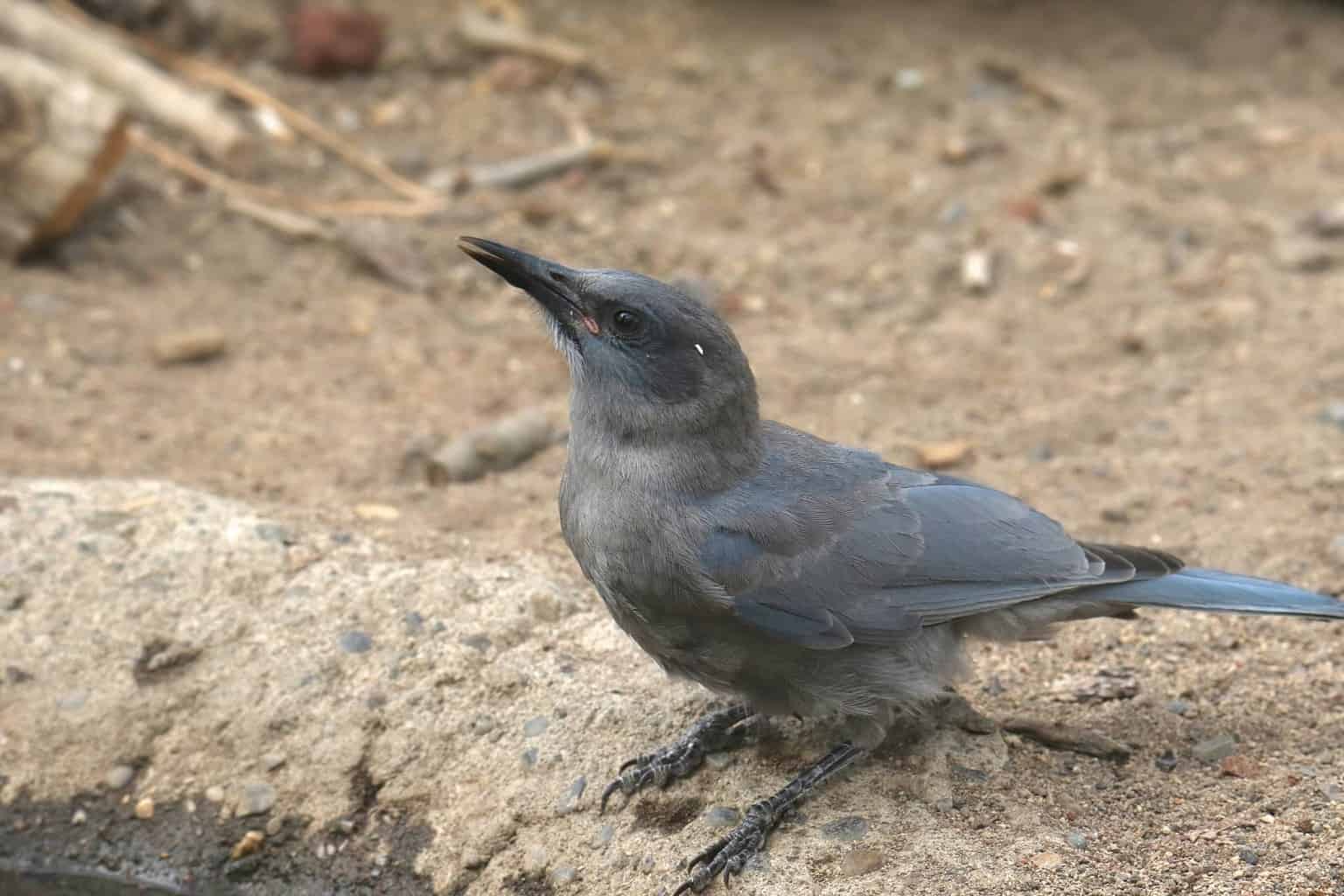
- Scientific Name: Gymnorhinus cyanocephalus
- Length: 9–11 inches
- Weight: 3.2–4.2 ounces
- Wingspan: around 18 inches
Pinion jays have beautiful gradient plumage. Their heads are deep blue, but the color gets lighter down their bodies. They’re small birds—around the same size as American robins.
Pinyon Jays are known for staying in groups, and they’re nomadic. They don’t like to remain in one habitat. Instead, they move from one place to another constantly.
They spend most of their time around chaparral and oak woodlands, and they may visit backyard feeders around the winter.
Common Grackle

- Scientific Name: Quiscalus quiscula
- Length: 11–13 inches
- Weight: 2.6–5 ounces
- Wingspan: 14–18 inches
Common grackles have blue heads, and the color spreads down to their chests. Other than that, their bodies are primarily black with iridescent feathers. They appear glossy under a light.
At first glance, you may not notice these birds are classified as blue—mainly because the black color covers most of their plumage.
Common grackles aren’t the only grackles in Nevada; great-tailed grackles are also present in large numbers. Both species mostly stay around parks, landfills, and farms.
Green Birds in Nevada
Lewis’s Woodpecker
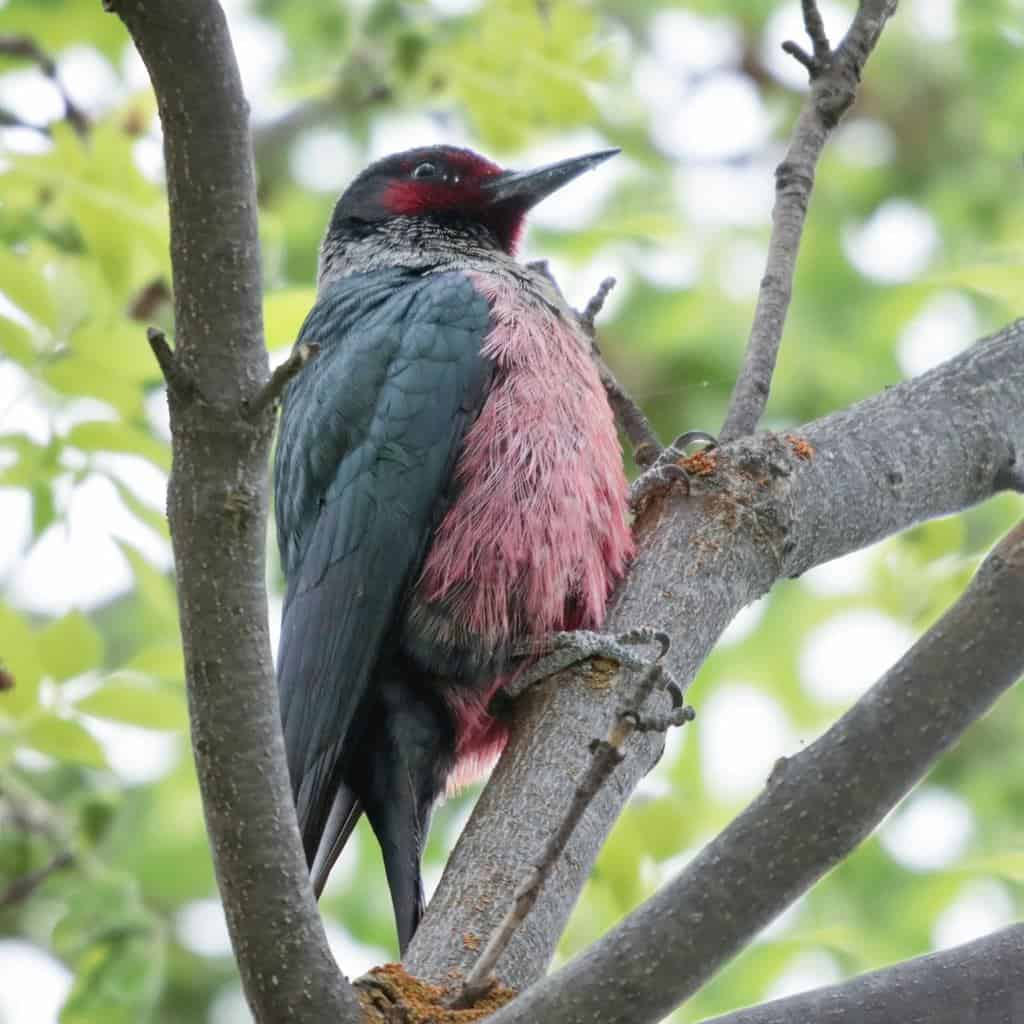
- Scientific Name: Melanerpes lewis
- Length: 10.2–11.0 inches
- Weight: 3.1–4.9 ounces
- Wingspan: 19.3–20.5 inches
Lewis’s woodpeckers have unique plumage, a blend of red and green. Their heads and backs are a deep shade of green, while their faces are red. You’ll never miss them, even from a mile away. Their feather colors are too unique to overlook.
These woodpeckers are known for flying like crows and staying on telephone lines. They primarily feed on insects, and they come to backyards if there are dead trees around.
Anna’s Hummingbird

- Scientific Name: Calypte anna
- Length: 3.9–4.3 inches
- Weight: 0.1–0.2 ounces
- Wingspan: 4.7 inches
Anna’s hummingbirds have distinct shapes, making them easy to identify. Their wings are green, and their heads are red with sparkly feathers. Their tail is dark green with black outer tail feathers. The feathers on their wings are iridescent, giving them a magical look overall.
These small birds prefer staying near cultivated gardens. If you have flower blossoms in your backyard, you may see a couple of hummingbirds flying around using their rapid wing beats to hover in place. They visit backyard feeders frequently in the spring.
Green Heron
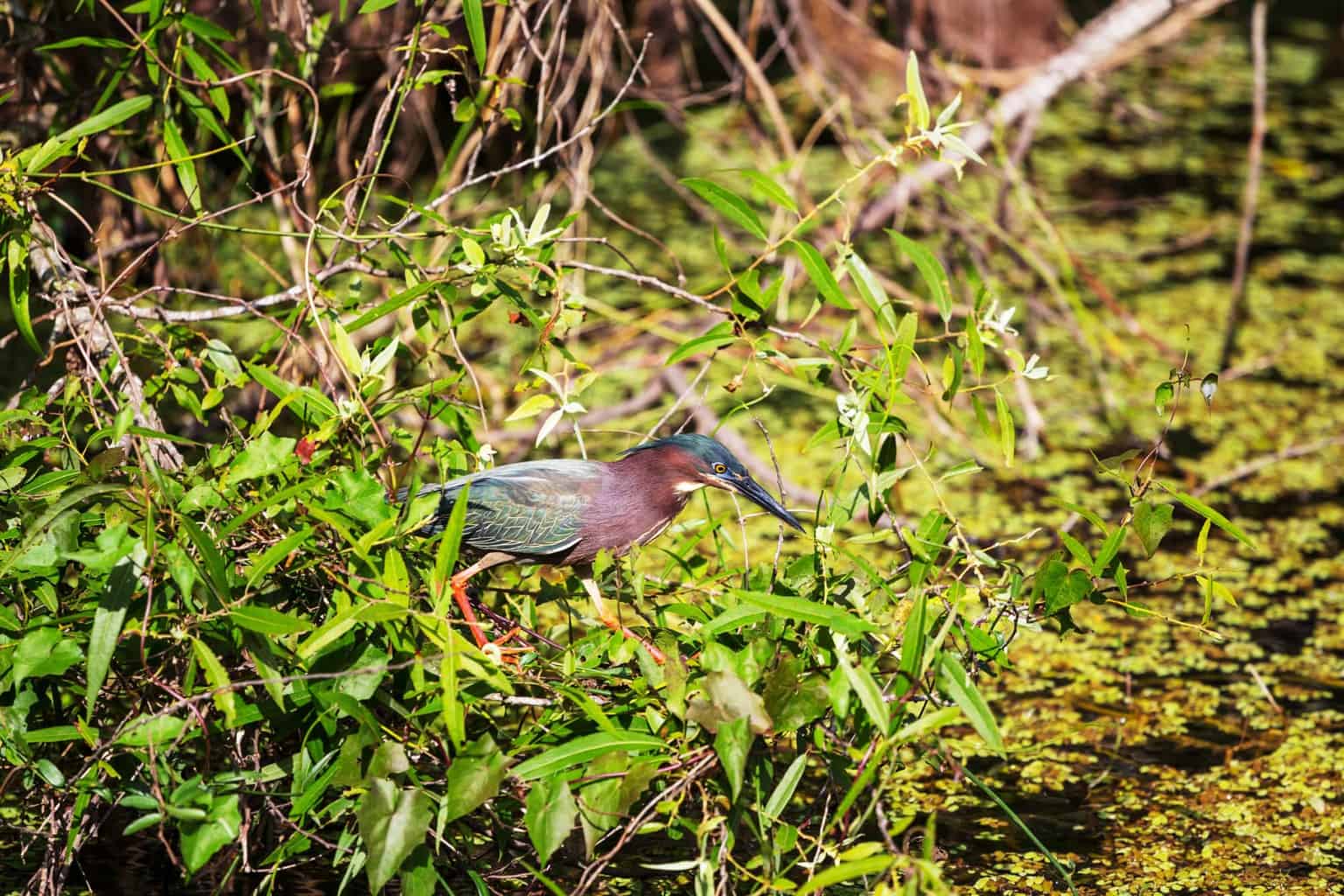
- Scientific Name: Butorides virescens
- Length: 16–18 inches
- Weight: 8–8.5 ounces
- Wingspan: 25–26.8 inches
Green herons have green wings, but they’re hard to identify because their feathers are iridescent. They change color under the light. Besides, their whole bodies aren’t green, so that’s not the first thing you’ll notice about them.
If you want to catch green herons, you’ll have to look for them near rivers and swamps. They generally like to stay near streams.
Green-Tailed Towhee
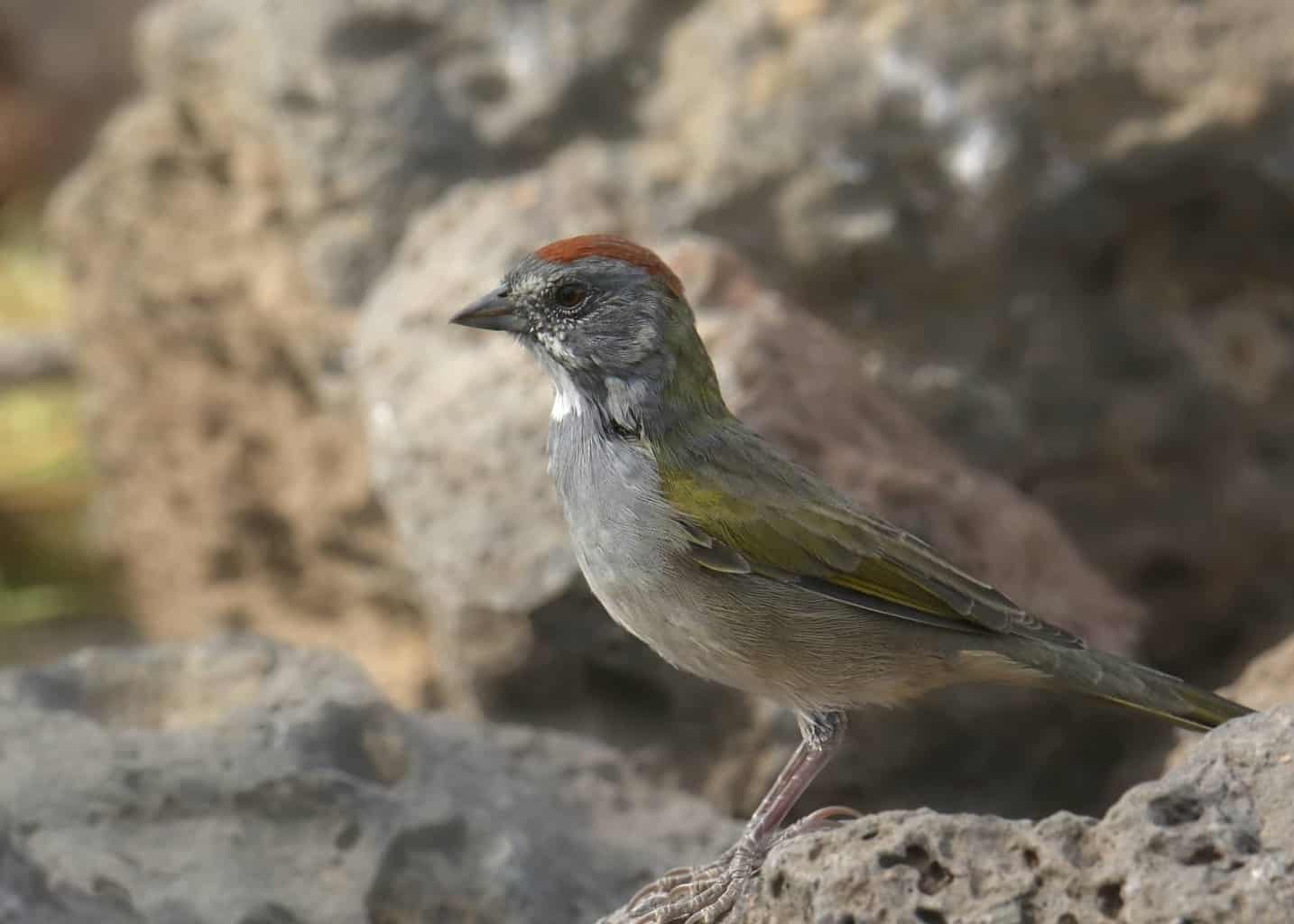
- Scientific Name: Pipilo chlorurus
- Length: 7.25 inches
- Weight: 0.8–1 ounce
- Wingspan: 0.9–1.4 ounces
As their name tells, Green-tailed towhees have green tails. Their head caps are orange, while their wings match their tails. Young towhees have all-green bodies.
Green-tailed towhees don’t like to appear a lot. They prefer to stay hidden, so your chances of catching them out in the open are low. Instead, you’ll find them near shrubby mountainsides.
Calliope Hummingbird

- Scientific Name: Selasphorus calliope
- Length: 2.8–3.9 inches
- Weight: 0.071–0.1 ounces
- Wingspan: 4.3 inches
Calliope hummingbirds have an interesting color combination. The females have green wings that sparkle under the sunlight, and the males have iridescent bold pink feathers on their necks.
These birds are much smaller than average, so catching them isn’t easy. They’re a common bird in Nevada, though, so hopefully, you can see one or two in flight. They mostly stay on old willows and alders.
Orange Birds in Nevada
American Robin
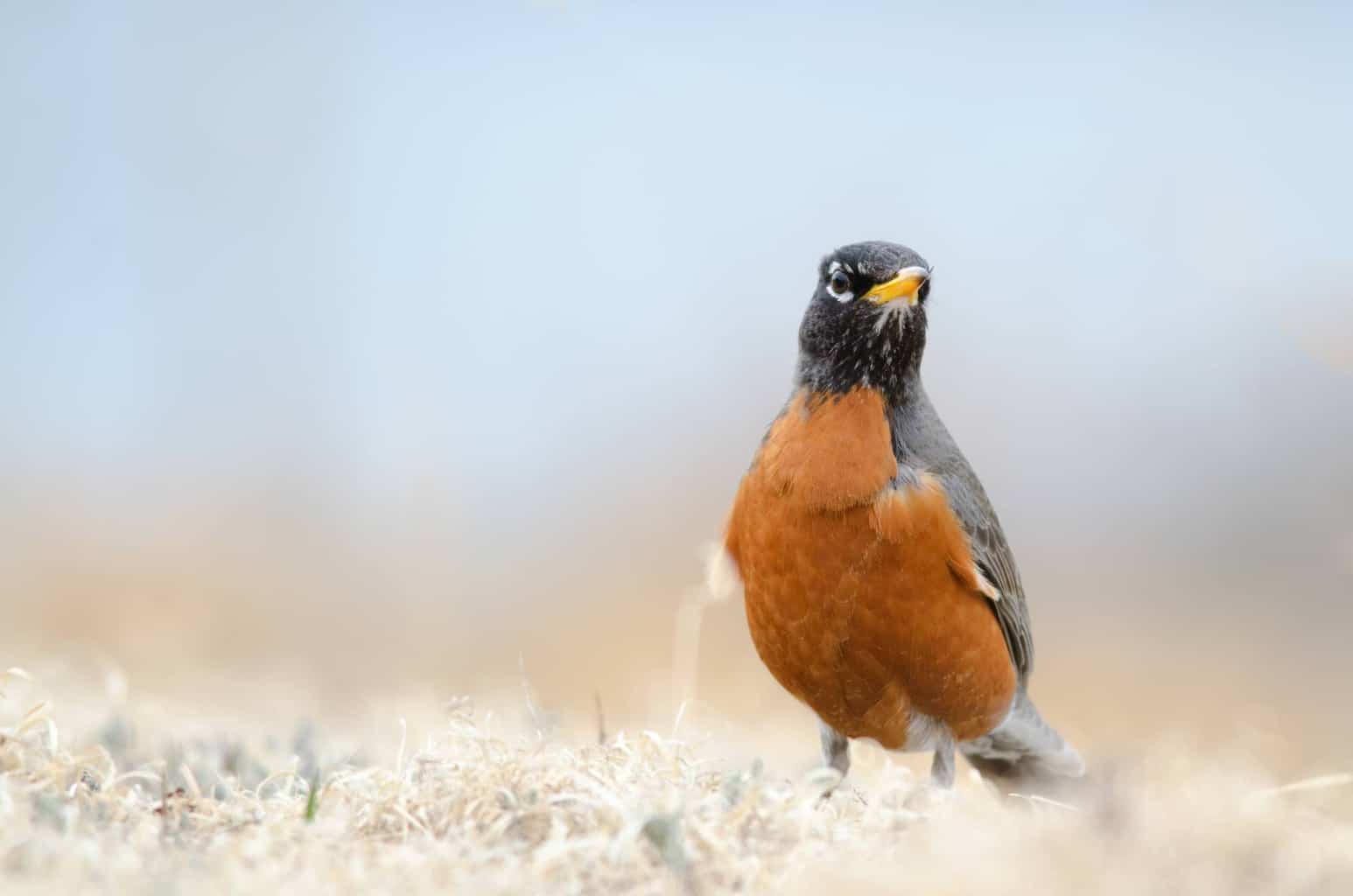
- Scientific Name: Turdus migratorius
- Length: 9.1–11.0 inches
- Weight: 2.5–3 ounces
- Wingspan: 12–16 inches
American robins are pretty common in most states, so it’s only natural you’ll find them in Nevada. They mainly forage on the ground, looking for insects to pull out and eat. They’re also commonly found around city streets and parks.
This familiar bird has an orange front with gray wings. They’re easy to identify because of their small bodies.
Bullock’s Oriole

- Scientific Name: Icterus bullockii
- Length: 6.7–7.5 inches
- Weight: 1.0–1.5 ounces
- Wingspan: 12–13 inches
Bullock’s orioles have orange fronts, underbellies, and faces. The females are a bit paler, but they have orange bodies all the same. Both genders have gray or black patches on top of their heads. They are easily identified by a black line that runs across their eyes and black throat.
These orioles stay around trees and shrubs most of the time, and they’re known for being agile fliers. They sometimes hang upside down to reach their food, so don’t be alarmed when you see that scene!
Baltimore Oriole

- Scientific Name: Icterus galbula
- Length: 6.6–7.5 inches
- Weight: 1–1.4 ounces
- Wingspan: 9–11.8 inches
The Bullocks aren’t the only orioles in Nevada; Baltimore Orioles are also regular state visitors.
They have bright orange bodies, though their heads and backs are deep black. The females are a bit paler, looking more like yellow birds.
You’ll find Baltimore orioles in open woodlands and deciduous forests.
Vermilion Flycatcher
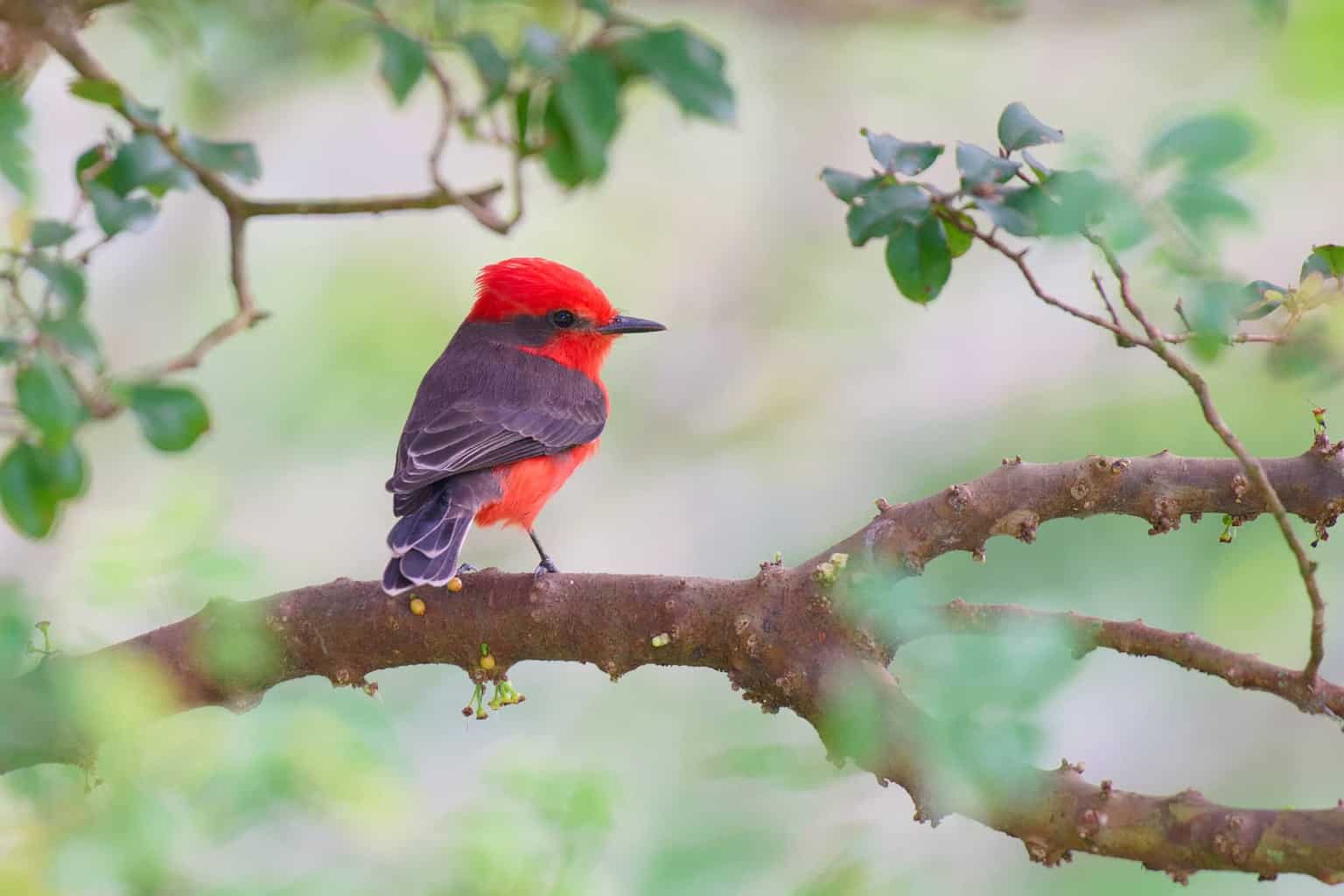
- Scientific Name: Pyrocephalus obscurus
- Length: 5.1–5.5 inches
- Weight: 0.3–0.5 ounces
- Wingspan: 9.4–9.8 inches
Vermilion flycatchers have bright orange plumage, making them relatively easy to identify. The females have orange fronts with gray heads, and the males have bright red fronts and crests. Meanwhile, their wings are either brown or gray.
Flycatchers mostly perch on telephone lines and shrubs, looking for flies to catch. They spend most of their time out in the open, so it’s not uncommon to see them.
Varied Thrush

- Scientific Name: Ixoreus naevius
- Length: 7.5–10.3 inches
- Weight: 2.4–3.5 ounces
- Wingspan: 13.5–15 inches
Varied thrushes have round bodies, making them look like balls of feathers. Their fronts are orange, but their wings and head caps are gray. Those are just the males, though. The females have brown wings and head caps instead of gray.
Varied thrushes are perching birds found frequently on tall branches and telephone lines. When they’re not roosting, they stay low, close to the ground. You can see them in thick trees and shrubs, trying to hunt for food.
These birds sing a lot during their breeding season. If you’re searching for them in those months, you’ll likely hear them before you see them.
Fox Sparrow

- Scientific Name: Passerella iliaca
- Length: 6–7.5 inches
- Weight: 1.1–1.2 ounces
- Wingspan: 10.4–11.5 inches
Fox sparrows’ colors vary according to where they live. You may find them wearing different colors, but they primarily have warm orange bodies with spots of white all over. They’re on the smaller side, but they’re still larger than hummingbirds.
You’ll find fox sparrows near mountainous regions and dense shrubbery. They also visit backyard feeders frequently, especially in the winter.
Yellow Birds in Nevada
Dickcissel

- Scientific Name: Spiza americana
- Length: 5.5–6.3 inches
- Weight: 0.9–1.4 ounces
- Wingspan: 9.8–10.2 inches
Dickcissels have yellow feathers on their chests arranged in a V shape. Their bellies are white, and there’s a black area above the yellow feathers.
These birds have an odd name because of their call. It sounds like repetitions of Dick, Sz, sizzle.
These yellow birds spend most of their time in pastures, hayfields, and on roadsides.
Yellow-Throated Warbler

- Scientific Name: Setophaga Dominica
- Length: 5.1–5.5 inches
- Weight: 0.3–0.4 ounces
- Wingspan: 8–8.3 inches
Yellow-throated warblers have gray upperparts with black spots on the sides and a yellow throat. Their bills are tall and sharp, making them easy to distinguish from other yellow birds. The males also have black masks over their eyes, giving them a distinct look.
You’ll find this medium-sized warbler near swamps and around woodlands. They frequently perch on high branches, looking in the cracks for insects. They’re not frequent visitors to backyard feeders.
They’re also known for their migratory behavior; they seldom stay in one place for long. If you spot one of them, you’ll hear its loud song first. These birds are avid singers with clear, loud voices.
American Goldfinch
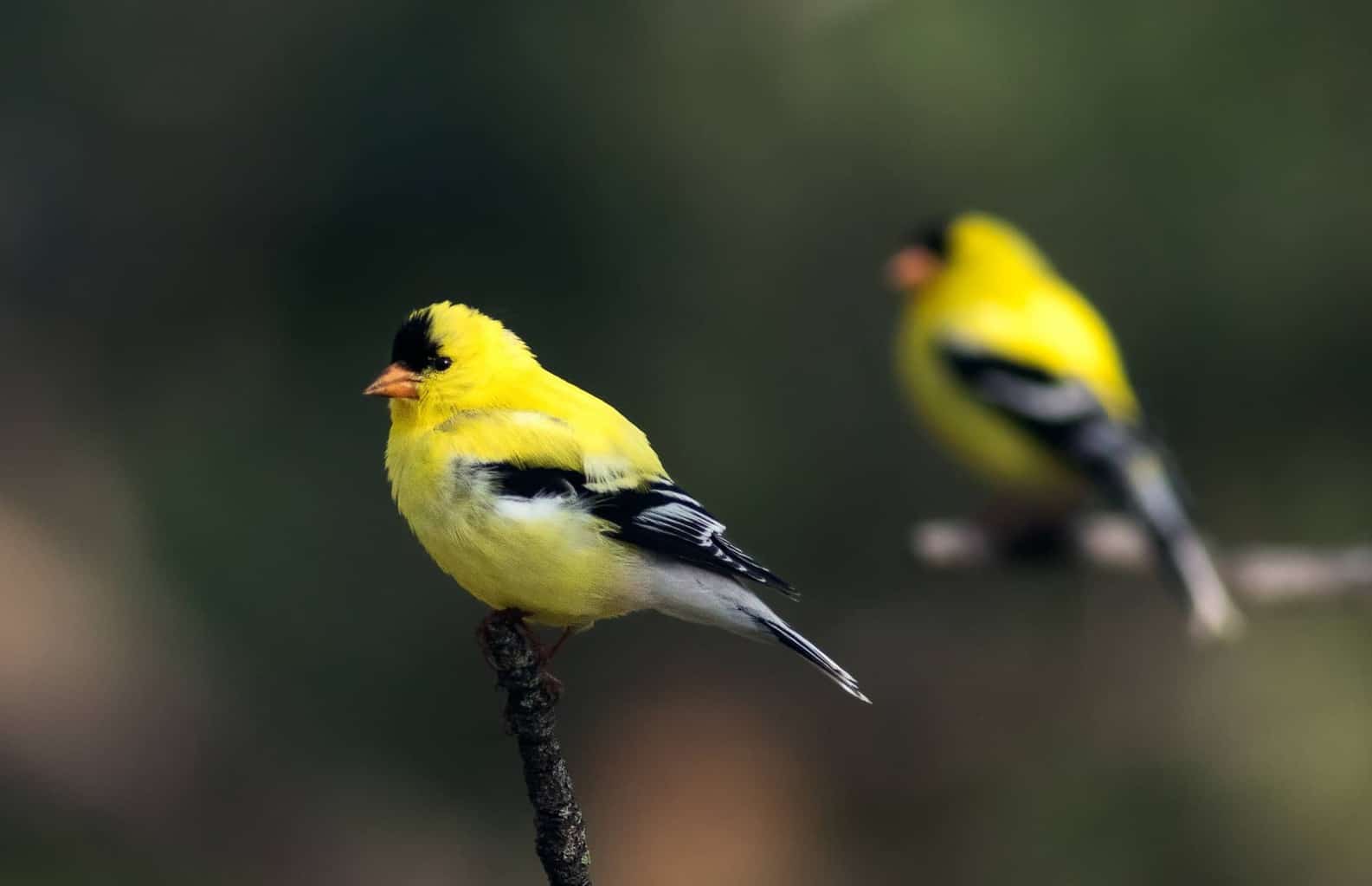
- Scientific Name: Spinus tristis
- Length: 4.3–5.5 inches
- Weight: 0.39–0.71 ounces
- Wingspan: 7.5–8.7 inches
Goldfinches are bright yellow, with black wings and a white wing bar, making them appear distinct among other species. They’re best known for their acrobatic flight. They’ll often bounce up and down while flying, and some of them flap around in short bursts.
These finches frequently visit backyards, so your chances of attracting them are high. They primarily feed on insects and seeds.
American Redstart
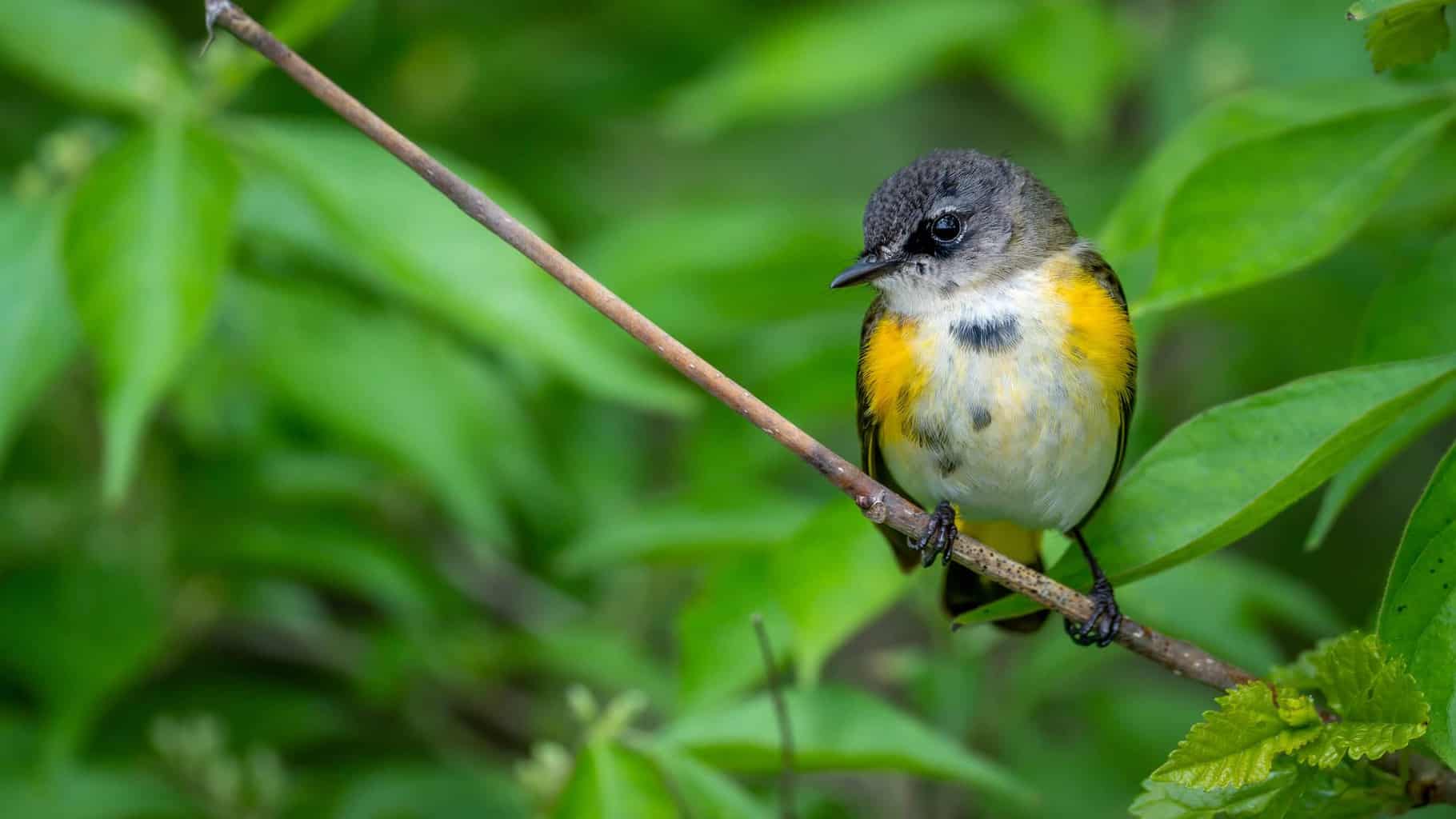
- Scientific Name: Setophaga ruticilla
- Length: 4.5–5.1 inches
- Weight: 0.2–0.4 ounces
- Wingspan: 6.4–7.5 inches
American redstarts are members of the New World warblers. Like most family birds, they’re unusually small, and they have black backs and wings.
You’ll find them around forests and woodlands, and they rarely stay in one place for long. They’re known for being active, so you may catch them in flight more often.
Yellow-Breasted Chat

- Scientific Name: Icteria virens
- Length: 7–7.2 inches
- Weight: 0.9–1.1 ounces
- Wingspan: 9.8–10 inches
Yellow-breasted chats are a bit controversial; there are many disagreements about which family they belong to. Many people say they belong to New World Warblers, but the shape of their bodies doesn’t comply.
These birds mostly live around dense foliage, and you’ll find them commonly around regrowing gardens.
Other Birds to Watch for in Nevada
Black-Capped Chickadee

- Scientific Name: Poecile atricapillus
- Length: 4.7–5.9 inches
- Weight: 0.3–0.5 ounces
- Wingspan: 6.3–8.3 inches
Black-capped chickadees look cartoon-like, having round, stocky bodies and black-colored heads. Their bodies are primarily gray, white, and black, and their eyes are hardly distinguishable from the black around them.
These birds don’t visit feeders often. Instead, they spend most of their time in shrubby woods and trees. They may also fly around residential areas and parks.
Mourning Dove
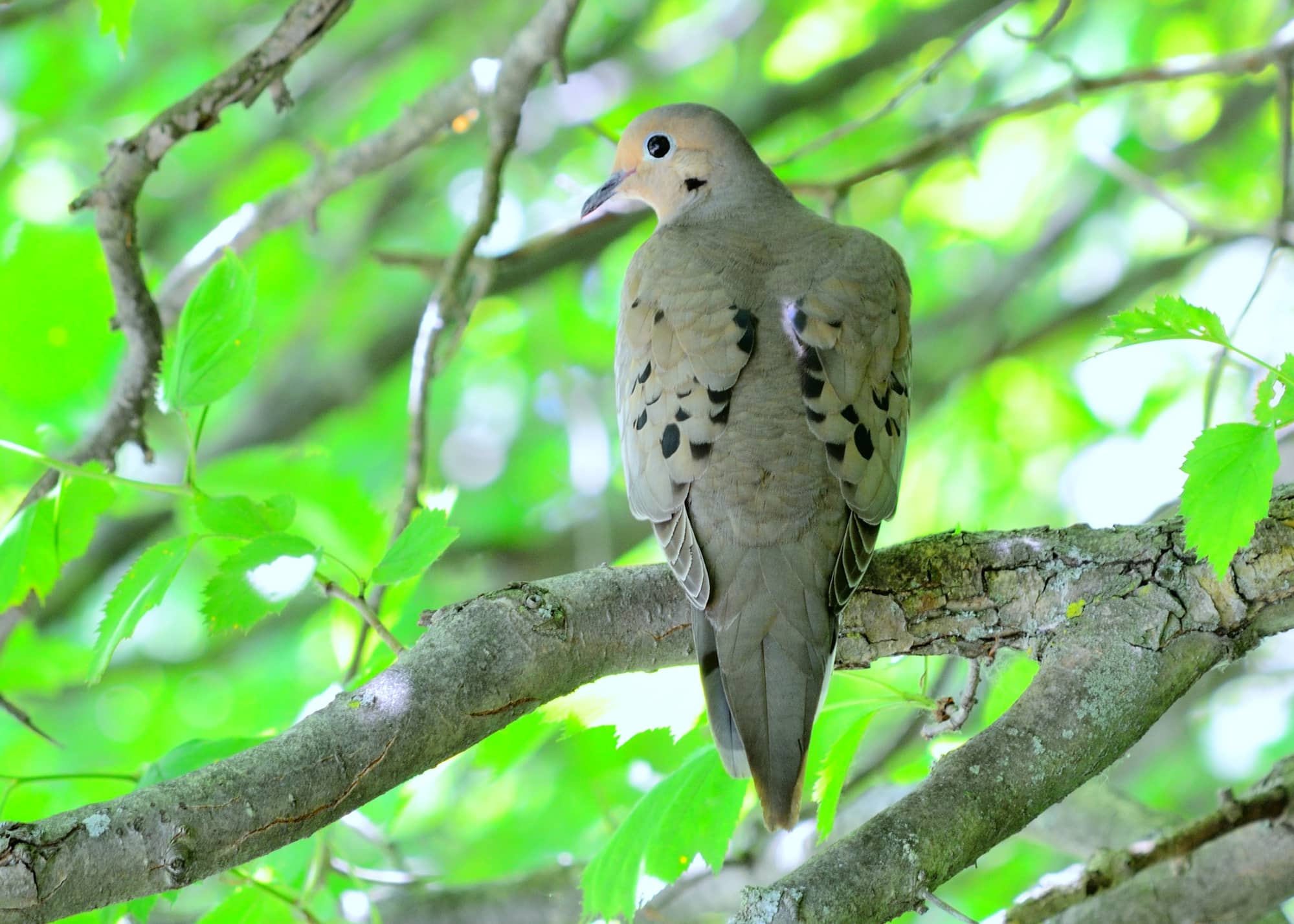
- Scientific Name: Zenaida macroura
- Length: 11–12 inches
- Weight: 4–6 ounces
- Wingspan: 17–17.7 inches
Mourning doves have pretty, tan plumage with dark spots all over and darker wings.
You can see mourning doves on telephone lines, fence lines, and on the ground. They pull insects out of the earth to feed, so it’s not uncommon to catch them foraging low.
If you want to see them in your backyard, hang a platform feeder and fill it with millet. They don’t come near box feeders because they prefer open spaces.
American Crow

- Scientific Name: Corvus brachyrhynchos
- Length: 16–21 inches
- Weight: 11–21 ounces
- Wingspan: 33–39 inches
American crows are pretty common in the US, and they’re the most common crow species in Nevada. They have a matte black body, and they’re a bit larger than ravens.
Crows are adaptable birds and can be found anywhere, including open woods, prairies, roadsides, and residential areas. They feed on worms, seeds, and fruits. Plus, they may eat other birds’ chicks.
Wrap Up
Nevada has a total of 492 species in different colors, shapes, and families. You may run by a chickadee pulling a worm out of the ground, an oriole hanging upside down to reach for food, or a red-winged blackbird singing loudly, trying to make its presence known.
The variety of birds is endless, and you’ll surely see at least one or two of the species we listed above. Visit woodlands and deciduous forests frequently, and you’ll get lucky.
In all cases, you’ll see some interesting birds in the Silver State. Grab your hat, buy a pair of binoculars, and get ready for an amazing bird-watching trip!

